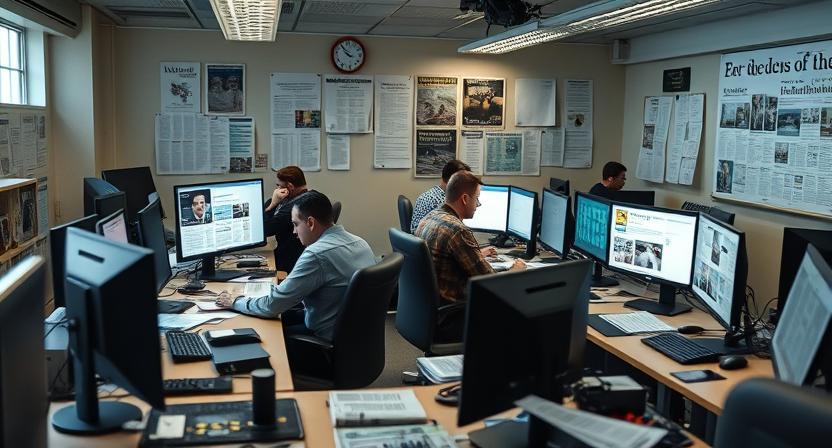Royal Navy Modernization Plans: Future Capabilities, Global Role, and Strategic Innovation

The Royal Navy modernization plans outline the United Kingdom’s strategy to transform its naval forces for the 21st century. In response to evolving global threats, technological advances, and the need to maintain maritime superiority, these plans focus on upgrading capabilities, integrating new technologies, and strengthening the Royal Navy’s global presence. This modernization effort ensures that the UK remains a credible and agile maritime power capable of projecting influence worldwide.
Introduction: The Need for Modernization
Modern naval operations face unprecedented challenges, from advanced missile systems and cyber threats to geopolitical tensions in key maritime regions. The Royal Navy’s modernization plans aim to address these challenges by enhancing operational readiness, deploying cutting-edge technology, and improving flexibility across the fleet. By modernizing, the Royal Navy ensures that it can fulfill its strategic commitments both domestically and internationally.
Core Components of Modernization
The Royal Navy’s modernization strategy focuses on several critical areas:
-
Fleet Expansion and Upgrades: Introducing new vessels, retrofitting existing ships, and enhancing submarine capabilities.
-
Advanced Weaponry: Implementing precision-guided munitions, advanced missile systems, and next-generation naval guns.
-
Cyber and Electronic Warfare: Strengthening cyber defenses and integrating electronic warfare capabilities.
-
Autonomous and Unmanned Systems: Deploying drones and unmanned surface and underwater vessels for reconnaissance, surveillance, and combat support.
These initiatives collectively enhance the Royal Navy’s operational versatility and strategic reach.
Upgrading Fleet Capabilities
A key element of the modernization plans is fleet modernization. This includes commissioning new aircraft carriers, destroyers, frigates, and submarines, all equipped with advanced sensors, weapons, and propulsion systems. Existing vessels are retrofitted with upgraded technology to improve operational efficiency and survivability. Submarines, in particular, are enhanced for stealth, nuclear deterrence, and multi-domain capabilities.
Technological Innovation
Technology is at the heart of the Royal Navy’s modernization. Emphasis is placed on:
-
AI and Automation: Enhancing decision-making and operational efficiency.
-
Integrated Sensor Networks: Improving situational awareness and threat detection.
-
Advanced Propulsion Systems: Increasing speed, range, and fuel efficiency.
-
Cybersecurity Measures: Protecting networks, communications, and operational systems from digital threats.
By embracing innovation, the Royal Navy ensures it remains adaptable to emerging challenges and maintains strategic superiority.
Enhancing Global Presence
Modernization plans aim to expand the Royal Navy’s global footprint. This includes forward deployments in strategic regions, joint exercises with allies, and a strong presence in critical maritime chokepoints. By maintaining a visible and capable fleet, the Royal Navy reinforces deterrence, strengthens international partnerships, and supports global maritime security.
Multi-Domain Integration
The Royal Navy’s modernization emphasizes multi-domain operations, coordinating efforts across:
-
Sea: Traditional surface and subsurface operations.
-
Air: Carrier-based aircraft and maritime patrol assets.
-
Cyber: Protecting networks and conducting offensive cyber operations.
-
Space: Utilizing satellite communications and intelligence for strategic advantage.
Multi-domain integration ensures seamless coordination and operational flexibility in complex scenarios.
Sustainability and Environmental Considerations
Modernization also includes a focus on sustainability. Energy-efficient vessels, reduced emissions, and environmentally responsible practices are being integrated into fleet operations. This not only aligns with global environmental standards but also ensures operational sustainability during extended deployments.
Training and Human Capital
Technology and modern vessels require highly skilled personnel. The Royal Navy is investing in specialized training programs, leadership development, and continuous professional education. These efforts ensure that personnel can operate advanced systems, implement new tactics, and maintain high levels of readiness.
Strategic Implications
The modernization plans have significant strategic implications:
-
Deterrence: Enhanced capabilities deter potential adversaries and reinforce the UK’s defense posture.
-
Allied Cooperation: Improved interoperability with NATO and partner navies strengthens collective security.
-
Rapid Response: Modernized fleets enable swift deployment to crisis regions.
-
Maritime Security: Protecting sea lanes, trade routes, and global maritime interests is a top priority.
These factors position the Royal Navy as a flexible, capable, and globally relevant force.
Conclusion: Preparing for the Future
The Royal Navy modernization plans represent a strategic vision to ensure that the United Kingdom remains a dominant maritime power. By upgrading fleets, integrating advanced technologies, expanding global presence, and investing in personnel, the Royal Navy strengthens its operational readiness and strategic influence. These plans not only address current threats but also prepare the Navy for future challenges, ensuring it continues to play a critical role in global security and defense.
❓ FAQs
1. What are the main goals of the Royal Navy modernization plans?
The goals are to enhance fleet capabilities, integrate advanced technology, expand global presence, and maintain operational readiness for current and future challenges.
2. What new technologies are being implemented?
Technologies include AI and automation, integrated sensor networks, advanced weaponry, autonomous vessels, and enhanced cybersecurity measures.
3. How does modernization impact global presence?
Upgraded fleets, forward deployments, and joint exercises strengthen deterrence, improve alliances, and ensure rapid response to international crises.
4. Are environmental factors considered in the plans?
Yes, energy efficiency, reduced emissions, and sustainable practices are integrated into fleet operations to ensure long-term operational sustainability.
5. How is personnel training addressed in modernization?
Specialized training, leadership development, and continuous professional education prepare personnel to operate advanced vessels, systems, and technologies effectively.
- Art
- Causes
- Crafts
- Dance
- Drinks
- Film
- Fitness
- Food
- Jocuri
- Gardening
- Health
- Home
- Literature
- Music
- Networking
- Alte
- Party
- Religion
- Shopping
- Sports
- Theater
- Wellness


